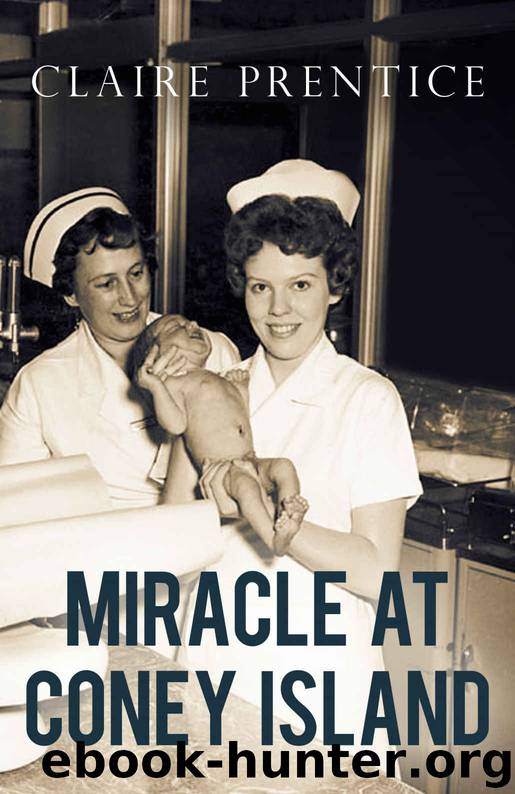Miracle at Coney Island: How a Sideshow Doctor Saved Thousands of Babies and Transformed American Medicine (Kindle Single) by Claire Prentice

Author:Claire Prentice [Prentice, Claire]
Language: eng
Format: epub
Published: 2016-05-16T23:00:00+00:00
***
In 1933, Couney and Julius Hess came together for a huge project that excited both men immensely. They were collaborating on the biggest infant-incubator facility the nation had ever seen. The setting was the Chicago Century of Progress International Exposition, held to commemorate the 100th anniversary of the incorporation of the City of Chicago.
While Chicago’s previous great fair, the 1893 World’s Columbian Exposition, boasted brilliant white neo-classical architecture, the 1933 expo celebrated the very latest in modern architecture with buildings painted in 23 different colors.
The 1933 expo coincided with the depth of the Depression. For a nickel, the public could escape the harsh realities of daily life and glimpse the latest innovations in science and technology. They could enter the “House of Tomorrow,” take a “Flight to the Stratosphere,” ride the roller coaster, or shop on “A Street in Paris.”
The infant incubator exhibit was built at a cost of $75,000 ($1.4 million today) and had a frontage more than 100 feet long, painted a patriotic red, white, and blue. “Living Babies in Incubators” screamed the signage in letters so large they could be seen from the opposite end of the Midway. The nurses made a display of feeding bottles and other baby items from around the globe.
From the outset, Hess took a hands-on approach. The incubator room was equipped with Hess incubators and could accommodate up to 25 babies at a time. Couney and Hess hired a staff of six nurses and a team of wet nurses. Hess loaned Couney his most valued employee, nurse Evelyn Lundeen, to help run the exhibit. Couney also had a Hess-designed incubator ambulance at his disposal 24 hours a day to bring babies to his facility.
For the first time, the facility was as much a laboratory, educational center, and research institute as a place where lives were saved. Unable to resist the lure of such a large, bustling, and well-equipped facility, Hess spent much of the summer on-site. Other eminent local pediatricians, including Dr. Isaac Abt and Dr. F.W. Schultz, visited the facility regularly to study the progress of the infants and carry out their own scientific observations.
Next door to the incubator room was the indoor nursery. The facility boasted a feeding room, staff quarters, and a large self-contained apartment for Couney, along with an outdoor nursery. The addition of the outdoor area enabled Couney to better prepare his charges for their return home. This emphasis on readying the infants for life outside the exhibit was something that Couney, probably taking his cue from the work of Hess and Lundeen, had grown increasingly preoccupied with.
When they were sufficiently strong, the babies graduated from the incubator room to the indoor nursery. There, they got accustomed to breathing ordinary, unfiltered air, and they were exposed to sunlamps for short periods, starting with just 15 seconds and building up to two minutes three times a week. When Lundeen felt they were ready, the babies were taken outside to enjoy the sunshine and fresh air for a few hours each morning.
Download
This site does not store any files on its server. We only index and link to content provided by other sites. Please contact the content providers to delete copyright contents if any and email us, we'll remove relevant links or contents immediately.
| Africa | Americas |
| Arctic & Antarctica | Asia |
| Australia & Oceania | Europe |
| Middle East | Russia |
| United States | World |
| Ancient Civilizations | Military |
| Historical Study & Educational Resources |
Cat's cradle by Kurt Vonnegut(15145)
Pimp by Iceberg Slim(14308)
4 3 2 1: A Novel by Paul Auster(12260)
Underground: A Human History of the Worlds Beneath Our Feet by Will Hunt(11996)
The Radium Girls by Kate Moore(11896)
Wiseguy by Nicholas Pileggi(5639)
Perfect Rhythm by Jae(5302)
American History Stories, Volume III (Yesterday's Classics) by Pratt Mara L(5238)
The Fire Next Time by James Baldwin(5220)
Paper Towns by Green John(5061)
Pale Blue Dot by Carl Sagan(4883)
A Higher Loyalty: Truth, Lies, and Leadership by James Comey(4820)
The Mayflower and the Pilgrims' New World by Nathaniel Philbrick(4402)
The Doomsday Machine by Daniel Ellsberg(4395)
Killers of the Flower Moon: The Osage Murders and the Birth of the FBI by David Grann(4367)
The Sympathizer by Viet Thanh Nguyen(4286)
Too Much and Not the Mood by Durga Chew-Bose(4253)
The Borden Murders by Sarah Miller(4214)
Sticky Fingers by Joe Hagan(4083)
